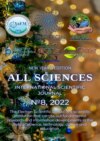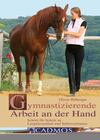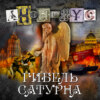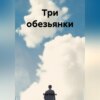Buch lesen: «All sciences. №8, 2022. International Scientific Journal»
Authors: Aliyev Ibratjon Xatamovich, Abbasova Nargiza Kabilovna, Abduraxmonov Sultonali Mukaramovich, Axmedov Tursun Axmedovich, Bilolov Inomjon Uktamovich, Botirov Qodir Abdullayevich, Vavilova Ekaterina Aleksandrovna, G'ofurov Oqiljon Axmedovich, Zuxritdinovna Mahina Abduvaliyevna, Karimov Boxodir Xoshimovich, Karimov Shavkat Boxodirovich, Obidov Foziljon Oripovich, Otajonov Salim Madraximovich, Umarova Gulnoza Masxariddinovna, Usmonov Yakub Usmonovich, Sharofutdinov Farruh Murodjonovich, Ergashev Sirojiddin Fayozovich, Yuldashaliyev Dilshod Quldoshaliyevich, Yusupova Dilfuza Aminovna, Yusupova Saboxatxon A]zamjonovna
Editor-in-Chief Ibratjon Xatamovich Aliyev
Illustrator Ibratjon Xatamovich Aliyev
Illustrator Boxodir Xoshimovich Karimov
Illustrator Obbozjon Xokimovich Quldoshev
Cover design Ibratjon Xatamovich Aliyev
Cover design Boxodir Xoshimovich Karimov
Cover design Ra'noxon Mukaramovna Aliyeva
Cover design Xolidaxon Tulkinovna Aliyeva
Proofreader Ibratjon Xatamovich Aliyev
Proofreader Boxodir Xoshimovich Karimov
Proofreader Ekaterina Aleksandrovna Vavilova
Proofreader Gulnoza Muxtarovna Sobirova
Translator Ibratjon Xatamovich Aliyev
© Ibratjon Xatamovich Aliyev, 2023
© Nargiza Kabilovna Abbasova, 2023
© Sultonali Mukaramovich Abduraxmonov, 2023
© Tursun Axmedovich Axmedov, 2023
© Inomjon Uktamovich Bilolov, 2023
© Qodir Abdullayevich Botirov, 2023
© Ekaterina Aleksandrovna Vavilova, 2023
© Oqiljon Axmedovich G'ofurov, 2023
© Mahina Abduvaliyevna Zuxritdinovna, 2023
© Boxodir Xoshimovich Karimov, 2023
© Shavkat Boxodirovich Karimov, 2023
© Foziljon Oripovich Obidov, 2023
© Salim Madraximovich Otajonov, 2023
© Gulnoza Masxariddinovna Umarova, 2023
© Yakub Usmonovich Usmonov, 2023
© Farruh Murodjonovich Sharofutdinov, 2023
© Sirojiddin Fayozovich Ergashev, 2023
© Dilshod Quldoshaliyevich Yuldashaliyev, 2023
© Dilfuza Aminovna Yusupova, 2023
© Saboxatxon A]zamjonovna Yusupova, 2023
ISBN 978-5-0059-4495-5 (т. 8)
ISBN 978-5-0059-1753-9
Created with Ridero smart publishing system
DEAR PEOPLES OF THE WHOLE PLANET!

Our world is entering a new year 2023. We, the organization of OOO "Electron Laboratory", the Scientific School "Electron" and its academic Council, the administration and every member of our team, wholeheartedly congratulate the entire multinational people of the inhabitants of the Earth, all countries of the world, each of their citizens and representatives of states, dear veterans, all men and women, our wonderful youth with this a wonderful holiday. We wish you all health, happiness, peace and prosperity!
In 2022, we created OOO "Electron Laboratory" and the Electron Scientific School was created under it, and the international scientific journal "All Sciences" was organized at the Scientific School, which is published monthly to this day in cooperation with the Ridero publishing system. At the moment, 8 issues of the journal, 182 scientific and popular scientific articles have been published in all areas of human cognition. Also, 44 books have been published by the team of the Scientific School from August 2021 to the present, while each of them has been recognized since the foundation of the Scientific School and the organization OOO "Electron Laboratory" in May 2022.
Of these, one epic novel "The Constructor of Worlds", in which 9 volumes were published; two one-volume novels; one collection of poems; two collections of essays; ten monographs; eight issues of the international scientific journal "All Sciences" in Russian; the first, sixth, seventh and eighth, in total four issues of the international scientific journal "All Sciences" – "All sciences" in English; one issue of the information magazine "Thinking and Creativity" in Russian; one issue of the information magazine "Tafakkur va izhod" in Uzbek; one textbook and four textbooks.
The number of members of the academic Council has increased from 20 to 37 people over the past six months, including doctors and candidates of sciences, professors and associate professors, and other representatives of the academic community. Close relationships have been established with such organizations as the Malaysian company "Clipper Energy" SND. BHD., the Joint Institute for Nuclear Research, the D. V. Efremov Research Institute of Electrophysical Equipment, the A. A. Chechen State University. Kadyrov, Ingush State University, Ridero Publishing System (Publishing Solutions LLC), Ministry of Higher and Secondary Special Education of the Republic of Uzbekistan, Ministry of Innovative Development of the Republic of Uzbekistan, Khokimiyat of the Fergana Region, Khokimiyat of the city of Ferghana, Joint Stock Company of the Ferghana Enterprise of Territorial Electric Grids of the Ferghana Region and the City of Ferghana, National University of Uzbekistan, Institute of Nuclear Physics at the Academy of Sciences of Uzbekistan, Scientific Research Institute "Physics of Semiconductors and Microelectronics" at the National University of Uzbekistan, Ferghana State University, Ferghana Polytechnic Institute, Ferghana branch of Tashkent University of Information Technologies, Unitary Enterprise "FarDU-Yashil Energy", Joint Stock Company "Ferghana TPP", Private Enterprise "Radioelectronics" and others.
In the new year 2023, it is planned to publish 12 subsequent issues of the international scientific journal "All Sciences" in Russian and English with at least 240 scientific articles; from the second to the fifth issues of the international scientific journal "All Sciences" in English; 6 subsequent issues, every two months, of the information journal "Thinking and Creativity" in Russian and Uzbek languages; 3 textbooks; 4 textbooks; about 10 monographs; 6 volumes of the epic novel "Constructor of Worlds"; 6 additional one-volume novels; 1 collection of poems; 1 collection of essays.
It is planned to attract academicians, doctors and candidates of sciences, professors and associate professors, other members of the academic community from scientists of Uzbekistan and foreign scientific associations, academies, general education and research institutes, universities and others to the academic council, increasing the number of members of the academic council to 50 people.
It is also planned to establish contacts with such organizations as partners of the Malaysian company "Clipper Energy" SND. BHD., the Ministry of Energy of the Republic of Uzbekistan, the Ministry of Investment and Foreign Trade of the Republic of Uzbekistan, the Academy of Sciences of the Republic of Uzbekistan, other universities and enterprises, reaching a new level in the international arena.
Thereby opening up new opportunities for all members, authors of scientific articles and other publications, our other partners new opportunities.
Dear friends, on this festive day, addressing you from the bottom of our hearts, may peace, happiness and prosperity be in every family in every state in 2023, may all our good dreams and hopes come true, may science flourish all over the world.
Happy New Year to you, dear peoples of the whole planet!
The organization of OOO «Electron Laboratory», the Scientific School «Electron» and its academic Council, the administration and each member of our team
DEDICATED TO THE HONORED SCIENTIST OF UZBEKISTAN, LAUREATE OF THE BERUNI STATE PRIZE, DOCTOR OF PHYSICAL AND MATHEMATICAL SCIENCES, PROFESSOR BANNOB OTAKULOVICH OTAKULOV
UDC 929.521.2

Otakulov Bannob Otakulovich (1931—2022)
Bannob Otakulovich was born in the Yarmazarsky village of the city of Fergana on April 10, 1931. In 1947, he graduated with honors from secondary school No. 30. And already in 1948 he entered the Fergana Pedagogical Institute, completing it and receiving a diploma with honors in 1952.
Noted before the rector of the Institute and the administration of the faculties for his knowledge and organizational skills, Bannob Otakulovich was hired as a teacher of the Department of Physics. He studied at the graduate school of the Faculty of Physics of Tashkent State University (now the National University of Uzbekistan) and in 1965, before the Academic Council of the Faculty of Physics and Mathematics of Central Asian State University, defended his thesis on "Checking the physical properties of diodes with elongated bases of germanium and silicon." And thanks to hard work, in 1966 he was awarded the title of associate professor.
In 1958-1961 he was the head of the department at the Faculty of Physics, from 1962 to 1965 he was the dean of the Faculty of Physics, and from 1965 to 1968 he served as the vice-rector for the academic part of the Institute. So from 1971 to 1984 he worked as the rector of the Institute. As a manager, he paid great attention to the personnel training process. He sent young teachers to graduate schools located in the central cities of the country to improve their qualifications, recommended research students for internships with leading scientists of his time, to create the necessary conditions important for the development of the work of the research institute, opened a suitable laboratory in the areas and demonstrated his initiative to engage in scientific work of young people and create the necessary conditions.
If in 1971 212 out of 342 teachers were engaged in research activities, already in 1975 this figure reached 286 people. For comparison, in the same year 1971, 34.2% of the entire academic and professorial staff of FerGPI, and in 1975 – 37.2%, in 1980 38% had academic degrees and titles. From 1972 to 1980, the scientists of the Institute published 70 monographs, textbooks, manuals, developments, 10 collections of scientific papers, 1,500 scientific and popular scientific articles, and also received 20 copyright certificates. In 1972-1978, 6 doctors and 57 candidates of sciences were preparing for defense at the Institute. In 1981-1985, the number of scientific directions became even greater. At that time, the scientists of the Institute published 14 monographs, 5 textbooks and teaching aids, 10 collections of scientific publications, 1100 scientific articles, and also received 7 copyright certificates.
In 1981-1985, research work was carried out on the island of 5 million 723 thousand agricultural contracts.
As rector, Bannob Otakulovich paid great attention to the development of sports and physical culture among students. He trained several champions and prize-winners of Asia and the world. In 1981, the military department was opened. Under his direct supervision, several international and republican scientific and theoretical conferences, seminars and colloquiums were organized at the Institute in various scientific fields. The construction of the Faculty of Medicine, and now the Faculty of Foreign Languages, which was also equipped with all the necessary equipment, was completed.
In the 1973-1974 competitions between republican pedagogical higher educational institutions in the direction of improving the financial and social condition of students, working staff and academic staff. In 1976, a 100-bed preventive wellness center was opened at the Institute. The merits of Bannob Otakulovich in the construction of faculty buildings for recreation areas to improve the functionality of a 120-seat summer health camp for students, workers and academic staff in the Yerdan village in the Ferghana region were simply titanically huge.
Headed by Bannob Otakulovich, economic agreements were drawn up with scientific and analytical institutes in Moscow, Novosibirsk and other cities. A research laboratory and a design bureau were established at the Institute, with more than 20 specialists involved as personnel. This scientific laboratory, together with the world-famous Central Aerodynamic Institute named after Tupolev and Zhukovsky, implemented the terms of agreements worth more than 7.5 million soums.
In 1977, Bannob Otakulovich and his students E. Abdullaev, E. Bilyalov, A. Afuzov became laureates of the Abu Rayhan Beruni State Prize for their scientific work on the topic "Development of semiconductor film tensoresistors and their introduction into the national economy".
In 1979, Bannob Otakulovich defended his doctoral dissertation at the Vilnius State University on the topic "Barrier effects in semiconductors". And for outstanding services in training highly qualified personnel in Uzbekistan, he was awarded the title of Honored Scientist of Uzbekistan in 1981.
14 teachers who defended themselves under his scientific supervision became candidates of physical, mathematical and technical sciences. During this period alone, 11 doctors of sciences were graduated.
And from 1992 to 1994, Bannob Otakulovich entered the position of rector of the Fergana State Pedagogical Institute for the second time, which has already become the Fergana State University. As rector, he brought to the fore the issue of the preparation of candidates and doctors of sciences, focused on the scientific activities of the university, as well as to improve the financial base of this scientific center. Thanks to this, he managed to raise the status of the university to one of the leading higher educational institutions in the country.
For exemplary activity in the process of training scientific and pedagogical personnel, he was awarded a diploma of the Presidium of the Supreme Republican Council and the Ministry, and also became a medalist in the field of education of the Republic and the All-Union scale. In 1972—1986 he was a deputy of the Fergana Regional Assembly of Deputies.
The famous scientist, organizer and leader, outstanding mentor Bannob Otakulov left this mortal world in 2022 on January 2 at the age of 91.
Karimov Bokhodir KhoshimovichCandidate of Physical and Mathematical Sciences, Associate Professor of the Faculty of Physics and Technology of Fergana State University
PHYSICAL AND MATHEMATICAL SCIENCES
MODERN ACHIEVEMENTS IN PHYSICS OF RESONANT ACCELERATOR INSTALLATIONS
UDC 621.039
Sharofutdinov Farrukh Murodzhonovich
Economic Director of OOO "Electron Laboratory"; Chief Scientific Secretary of the Electron Scientific School at OOO "Electron Laboratory"
OOO "Electron Laboratory", Electron Scientific School, Saint Petersburg, Russian Federation
Aliev Ibratjon Khatamovich
2nd year student of the Faculty of Mathematics and Computer Science of Fergana State University; CEO of OOO "Electron Laboratory"; President of the Electron Scientific School at OOO "ElectronLaboratory"
Ferghana State University, Ferghana, Uzbekistan; OOO «ElectronLaboratory», Electron Scientific School, Margilan, Uzbekistan
Аннотация. Современные научные исследования прогрессивно развиваются, обещая наличие новых результатов. Одним из них является открытие и популяризация физики резонансных ядерных реакций в энергетическом плане. Особенностью данного раздела физики ядерных реакций является то, что возвращается вопрос об эффективности обычных экзо-энергетических ядерных реакций при проведении на ускорителях.
Ключевые слова: монохромотизация, резонансные ядерные реакции, ядерная физика, ускоритель заряженных частиц.
Annotation. Modern scientific research is progressing progressively, promising new results. One of them is the discovery and popularization of the physics of resonant nuclear reactions in the energy plan. The peculiarity of this section of nuclear reaction physics is that the question of the effectiveness of conventional exo-energetic nuclear reactions when carried out on accelerators returns.
Keywords: monochromatization, resonant nuclear reactions, nuclear physics, charged particle accelerator.
As is known, nuclear reactions are exo- and endo-energetic in nature, which divides them into categories according to the absorption and release of energy during the passage of the energy itself, due to the difference in the masses of the initial and resulting particles. At the same time, if the energy characteristics of these reactions were preserved, then the situation related to the number of interacting particles along the specified reaction channel becomes a big question, because any other interaction can also take place, due to the probabilistic nature of the behavior of such processes.
But as it turned out, the increase in the number of particles involved in the interaction increases when their energy approaches certain values – resonances, which are already more precisely defined today. But one aspect remained quite interesting and this is the question of the approximation of energy to a certain limit – the Coulomb barrier of the nucleus. Indeed, this barrier is not large in its dimensions, moreover, there is an additional energy spread due to ionization, which, fortunately, can already be calculated more accurately, for this reason, if we take into account all the ionization losses of the target substance, as well as the Coulomb barrier, as a result, the particle will have a sufficiently small nuclear gap energy. Here it is appropriate to recall the theory of dualism, according to which each particle is also a wave, and since the energy of the particle in the nucleus becomes minimal, its wavelength begins to grow, creating opportunities for interaction directly with the nucleus, excluding other probabilistic cases, which include the tunneling effect or scattering with elastic collision.
It seemed that this was not an effective procedure, since initially it was necessary to at least get into the Coulomb barrier itself, but due to sufficient beam density, as well as the effect of a monochromotizer, a theoretical result was obtained that greatly increases the efficiency of the entire reaction. For comparison, with only a boron-proton reaction with the release of 3 alpha particles on a thin 13 micron target, the effective cross-section of the nuclear reaction increases sharply and 99.999972% of all particles interact even at low currents, for a beryllium-proton-lithium reaction with the same alpha particles, this indicator is almost 100%, with the necessary accuracy. But there are also reactions with low efficiency, for example, proton-lithium-6 reactions with two alpha particles has an efficiency of only 65.53%, but at the same time having a large energy output.
The monochromotizer, which was mentioned earlier, is a device that separates a beam in a magnetic field by energy, after which a nano-structural substance – a carbon mesh – falls in its path, between the walls of the tubes of which there is a thin layer of a dielectric element or compound. At the same time, the induction vector of such an installation varies by a value of the order of 0.1 T and it can be noted that when the beam is deflected, a spectrum with a width of 0.327 mm is observed, while the wall thickness is measured in tens of nanometers, when the diameter of one inner tube is 0.572 microns, and the outer one is 0.636 microns. Losses at the same time exist and due to the "impact" on the walls of the tubes, up to 12.5% of the total number of charges is consumed.
But the energy accuracy in this case increases, so if for the SOKOL-2 accelerator at energies of 2 MeV, the accuracy was 5 keV, and for modern accelerators, more often at an energy of 20 MeV, the accuracy was 1 keV, then for an accelerator with a monochromotizer at that energy of 20 MeV, an accuracy of up to 50 MeV can be achieved, which it can even be considered the top of the unattainable, but even in spite of this, as the works show, these are quite achievable values, but for experimental verification, cooperation has already been established on the part of the company-the author of this project, OOO "Electron Laboratory" and the Scientific School "Electron" with the "Research Institute of Electro-Physical Equipment" – "D. V.NIIEFA. Efremov", as well as with such organizations as the Scientific Research Institute "Physics of Semiconductors and Microelectronics" at the National University of Uzbekistan, Ferghana State University, Ferghana Polytechnic Institute, the State Unitary Enterprise "Yashil-Energia" at Ferghana State University, the Ferghana branch of the Tashkent University of Information Technologies and other organizations.
In the future, when conducting a successful series of experiments, much attention will be paid to the analysis of energy characteristics and resonances on light, heavy and superheavy nuclei at the specially created Research Laboratory of Physics of Resonant Nuclear Reactions at OOO «Electron Laboratory», in which we wish them good luck on the way to improving knowledge about the microcosm and its wonders of modern human society.










